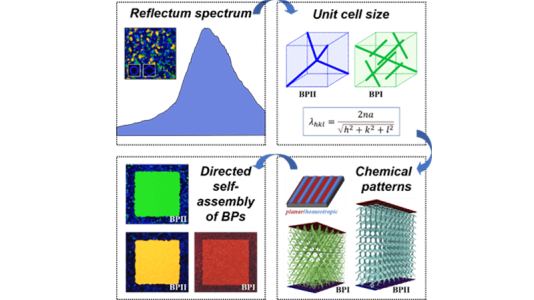
Scientific Achievement
Demonstrated that creating chemically patterned surfaces is a generally applicable method of assembling blue-phase single crystals.
Significance and Impact
Single crystalline blue-phases are preferred over their polycrystalline counterparts for display and sensing applications. We devise a recipe for forming single crystals which is applicable irrespective of the chemistry and complexity of the blue-phase forming materials.
Research Details
- Continuum simulations were used to calculate free energy for different blue-phase lattice orientations on striped chemical patterns consisting of alternating homeotropic and planar regions.
- Predictions from continuum simulations were used to design chemical patterned surfaces.
- Single crystalline blue-phases were formed from three different materials.
- Single crystals were formed from a photopolymerizable formulation; UV curing made the single crystals thermally stable.
Argonne National Laboratory seeks solutions to pressing national problems in science and technology. The nation’s first national laboratory, Argonne conducts leading-edge basic and applied scientific research in virtually every scientific discipline. Argonne researchers work closely with researchers from hundreds of companies, universities, and federal, state and municipal agencies to help them solve their specific problems, advance America’s scientific leadership and prepare the nation for a better future. With employees from more than 60 nations, Argonne is managed by UChicago Argonne, LLC for the U.S. Department of Energy’s Office of Science.
The U.S. Department of Energy’s Office of Science is the single largest supporter of basic research in the physical sciences in the United States and is working to address some of the most pressing challenges of our time. For more information, visit https://energy.gov/science.